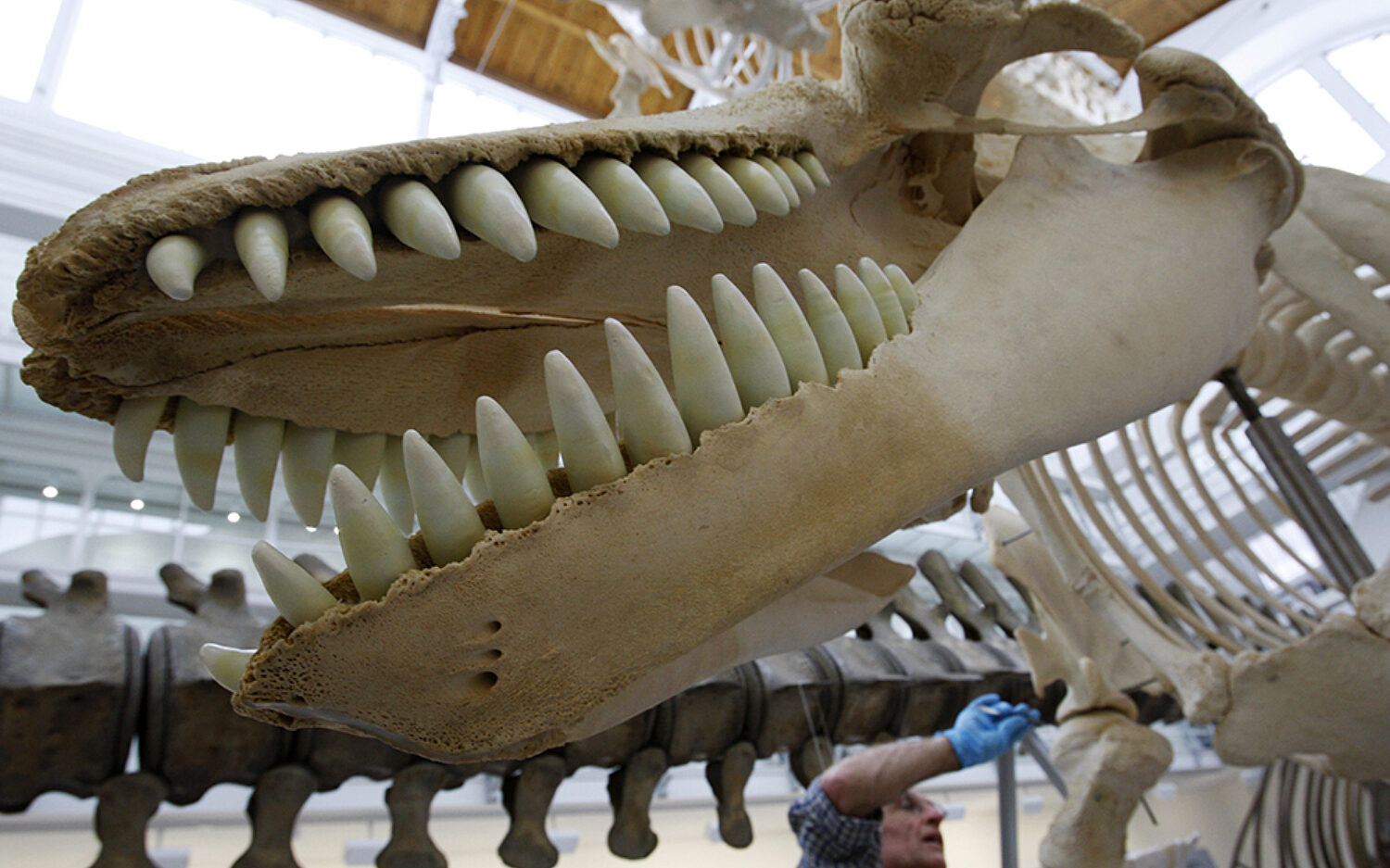Great white or killer whale—which do you think would win in a showdown? To make a guess, compare their . . .
. . . teeth. They’re terrible! We don’t mean in the “you really need braces” way. We mean in the “please don’t bite me” way. Orcas have 40 to 50 teeth shaped like cones. These interlocking choppers can tear apart anything from salmon to sharks. Great whites have about 50 teeth too . . . in the first row. Multiple rows of teeth grow behind to replace them when they break or fall out. And they will break and fall out. Yours would too if you devoured whole seals for dinner!
. . . size. Killer whales can grow up to 32 feet long and weigh up to six tons—as much as six small cars! Sharks can grow longer than 20 feet. But they weigh less than three tons (three small cars).
. . . speed. “Sir, do you know how fast you were going?” A shark doesn’t have the brain power to answer that question. But if it did—and it didn’t take a bite of you first—it would probably say about 15 miles per hour, or 35 if it was really in a hurry. Killer whales, on the other hand, travel a slow, steady, eight miles per hour—unless they want to sprint. They can go 35 miles per hour at top speed.
. . . technique. When it comes to hunting—and living—sharks are normally a solo act. They sneak up on prey from above or beneath. But killer whales work in groups. They use their combined body power to make waves, knocking tasty seals off sheets of floating ice. When hunting sharks, they flip the dangerous fish over in the water. Great white sharks go into a paralyzed state when they are upside down. The whales escape the sharp shark teeth, winning the showdown—and a big dinner.


















